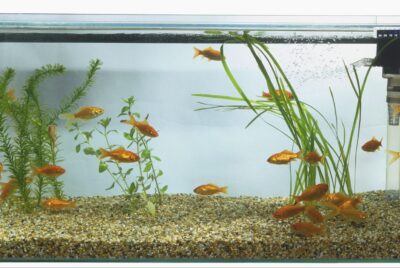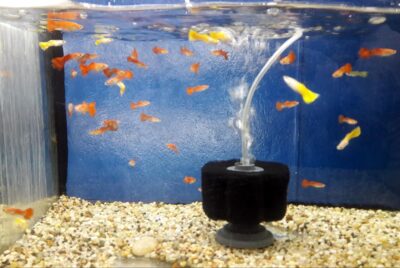How to Add Calcium to Aquarium
To add calcium to an aquarium, there are a few different methods you can use. One way is to incorporate calcium-rich substrate, such as crushed coral or aragonite, into the bottom of the aquarium. Another option is to add a calcium supplement directly to the water, which can come in the form of a liquid solution or a powder. Whichever method you choose, it’s important to monitor the calcium levels in your aquarium regularly to ensure that they remain within a safe and healthy range for your aquatic pets.
What is Calcium and Why Do I Need to Add it to My Aquarium?
Calcium is an essential mineral that is required by all aquatic life, including fish, corals, and plants. It helps to promote healthy growth and development, aids in the formation of bones and teeth, and contributes to the general health of your aquarium’s inhabitants.
Just like humans and other animals, fish and other aquatic life require a consistent supply of calcium to ensure optimal health. However, the calcium levels in an aquarium can fluctuate, which is why it’s essential for fishkeepers to monitor and maintain their calcium levels and provide additional supplementation when necessary.
Signs of Calcium Deficiency in Aquariums
If your aquarium is lacking in calcium, there may be several visible signs that can alert you to the deficiency. For example, you may notice that your fish are not growing as quickly as they should be, or that their bones and teeth are weaker than usual.
In addition, some corals and other invertebrates may begin to lose color or fade away, which is a sure sign that the calcium levels in your aquarium are too low.
Calcium Sources for Aquariums
Thankfully, there are many different sources of calcium available for fishkeepers to utilize. Some of the most common include:
- Calcium supplements
- Crushed coral
- Calcium reactors
- Calcium-rich foods
Each of these sources has its advantages and disadvantages, so it’s important to choose the one that will work best for your specific aquarium and its inhabitants. For example, calcium supplements may be the easiest and most convenient option, while crushed coral or calcium reactors can provide a more long-term solution.
Adding Calcium to Your Aquarium
Once you have chosen the source of calcium that you want to use for your aquarium, it’s important to follow some general guidelines for proper supplementation. The correct dosing amount and frequency will vary depending on the size of your aquarium and the type of calcium source you are using.
However, some general tips for adding calcium to your aquarium include:
- Use a test kit to monitor your aquarium’s calcium levels and adjust your supplementation as needed
- Start with a smaller amount of calcium and gradually increase the dosage over time to prevent any sudden changes or imbalances
- Add calcium supplements directly to the water supply or use a calcium reactor to diffuse it into the water gradually
Precautions When Adding Calcium to Your Aquarium
It’s important to note that adding too much calcium to your aquarium too quickly can also be harmful to aquatic life. This is why it’s important to take precautions when adding calcium to your aquarium, such as:
- Always follow the manufacturer’s instructions regarding dosing amounts and frequency
- Never add too much supplement at once, as this can cause rapid changes in calcium levels and harm aquatic life
- Monitor your aquarium’s calcium levels regularly and take action if any issues arise
Maintaining Calcium Levels in an Aquarium
In addition to adding calcium supplements or using other sources of calcium, there are other steps you can take to maintain the calcium levels in your aquarium. These include:
- Regular water changes to flush out excess minerals and keep calcium levels stable
- Providing a healthy diet for your fish that is rich in calcium
- Maintaining proper pH and alkalinity levels in your aquarium
Getting Started with Adding It to Your Aquarium
If you’re new to adding it to your aquarium, the process may seem intimidating at first. However, once you understand the proper dosing amounts and frequency and choose the right source for your specific aquarium, it can be a simple and straightforward process.
Here is a step-by-step guide to help you get started:
- Choose the source of calcium that you want to use for your aquarium. Consider the size of your aquarium and the type of aquatic life you have when making your decision.
- Use a test kit to monitor your aquarium’s calcium levels and determine whether supplementation is necessary.
- Begin dosing your aquarium with a small amount of the chosen calcium source.
- Monitor your aquarium’s calcium levels regularly and adjust your supplementation as needed.
- Maintain a healthy diet for your fish and other aquatic life that is rich in calcium to promote optimal health and growth.
Conclusion
Adding it to your aquarium is a critical aspect of ensuring that your aquatic life is healthy and thriving. By understanding the importance of it and choosing the right supplementation method for your specific aquarium, you can maintain optimal levels and provide a safe and healthy environment for your fish and other inhabitants.
FAQs
Can I add too much calcium to my aquarium?
Yes, adding too much of it to your aquarium can be harmful to aquatic life. Always follow dosing instructions carefully and monitor your aquarium’s calcium levels regularly.
Can I use calcium supplements for all types of aquariums?
Calcium supplements can be used in most types of aquariums, but you should always choose the right type of supplement for your specific aquarium and its inhabitants.
What are some symptoms of calcium deficiency in aquariums?
Symptoms of calcium deficiency can include slow growth in fish, weakened bones and teeth in fish, and fading colors in corals and other invertebrates.
How often should I add calcium to my aquarium?
The dosing frequency will depend on the type of it supplement you are using and the size of your aquarium. Always follow manufacturer’s instructions and monitor calcium levels regularly.
Can I use it supplements in a saltwater aquarium?
Yes, calcium supplements can be used in saltwater aquariums to maintain optimal calcium levels and promote healthy growth of fish and other aquatic life.




